|
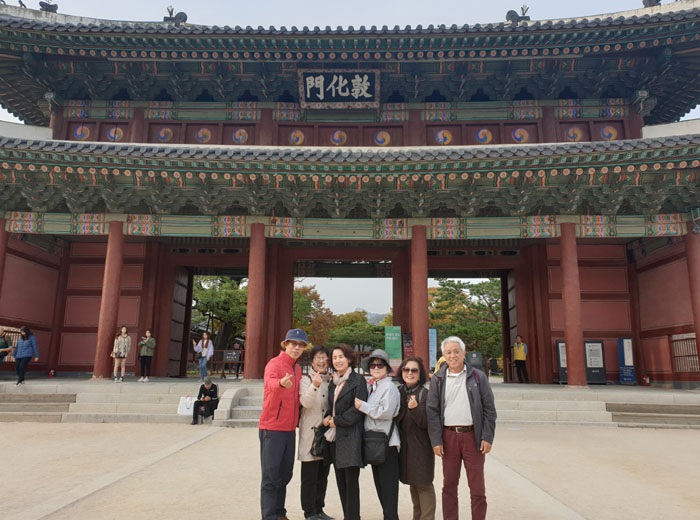
창덕궁(Changdeokgung Palace)의 정문 돈화문(Donhwamun
Gate)
(Oct 25, 2019. Seoul, South Korea)
한국방문 일정을 대부분 마친 10월 24일(목) 전남 구례에서 용인으로
올라왔다.
김오영씨(사진 왼쪽) 댁에서 하루 묵고 다음 날 25일 서울 인사동과 북촌을 둘러보았다.
해외에 살다가 한국으로 역이민한 사람들의 집이 어떤가 한번 보러 오라는 말에 하루 신세를 졌다.
창덕궁은 들어가지 않고 앞에서 사진만 찍었다.
Donhwamun Gate is main
entrance to the Changdeokgung Palace.
When it was first built, there was a white
granite substructure,
on the top of which a two-storied gate
building was erected.
This is a typical structure of the entrance
to our palace that was transmitted from the
Three Kingdoms period.
Unfortunately, now, the substructure has
disappeared;
only the two-storied building remains.
This is quite different from the structure
of the Gwanghwamun,
the main entrance to the main palace of the
Joseon Dynasty,
which was erected on the structure with
three open arches on the ground.
As one may observe,
the Donhwamun is elegant but simple
because it was built as an entrance to a
separate palace of the Changdeokgung Palace.
The Donhwamun was set
on fire by the Japanese invaders,
but it was reconstructed as it had been by
King Seonjo in 1607.
It's the oldest entrance to remain in Seoul.
Only the threshold of the entrance was
reconstructed so that an automobile could
pass through it easily. (Treasure No. 383).
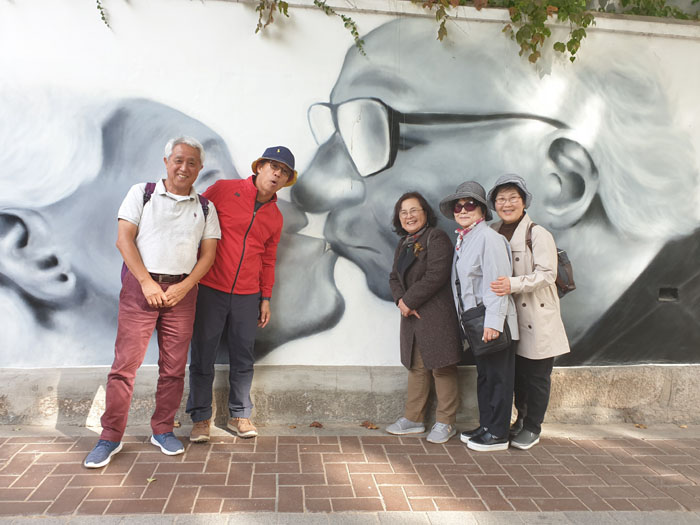
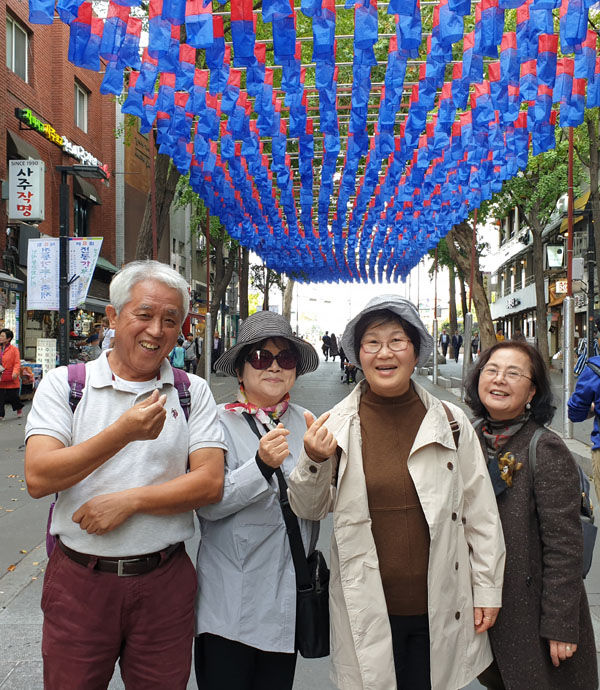
이 세 분은 모두 미국에 거주하고 계신다.
한국방문 일정이 우연히 겹쳐 하루 만나 같이 즐겁게 일정을 함께 했다.
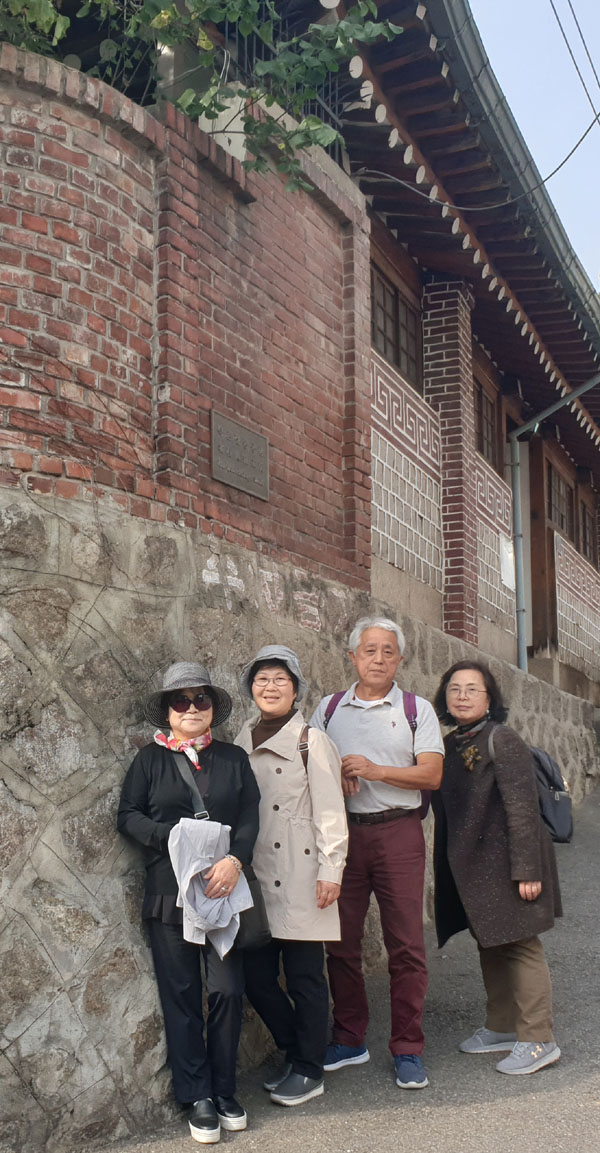
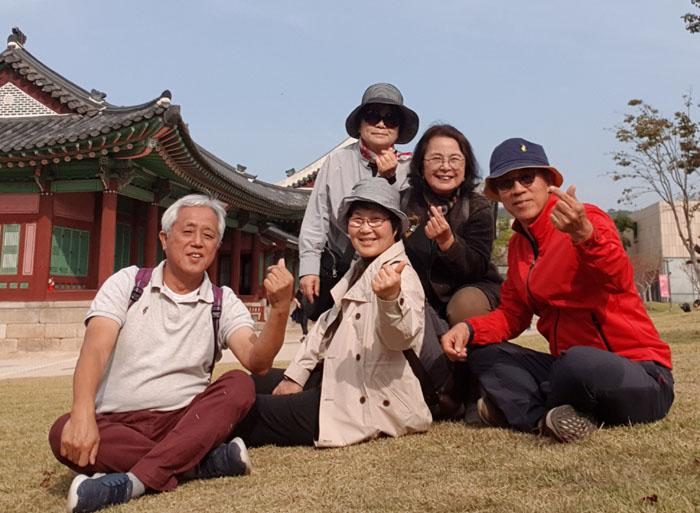
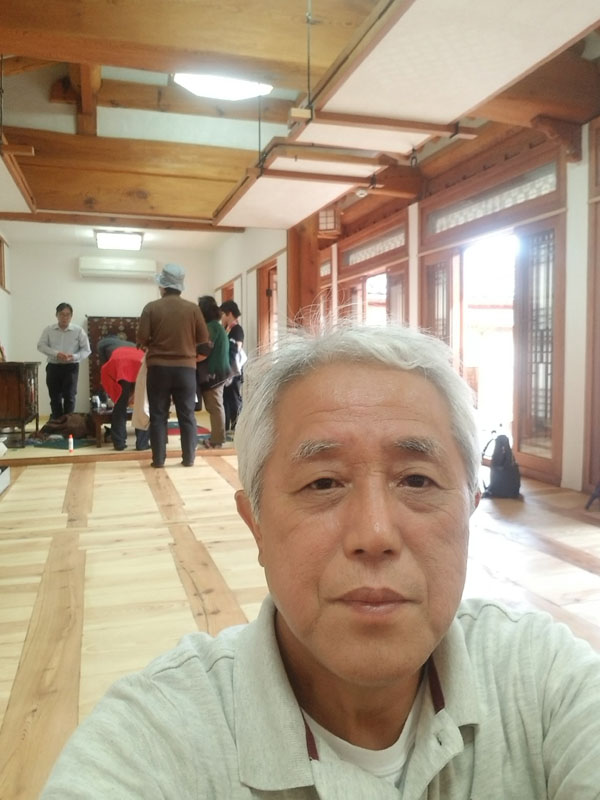
북촌 전통공예 체험관 (Bukchon Traditional Crafts Experience Center)
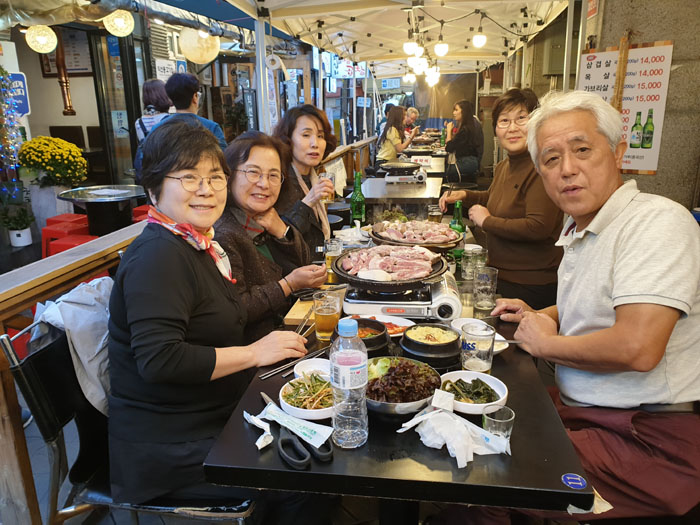
조금 늦게 자리를 함께 한 Mitchell 도 함께.
Mitchell님은 미국이민 생활을 마치고 고국으로 돌아오셨다.

|